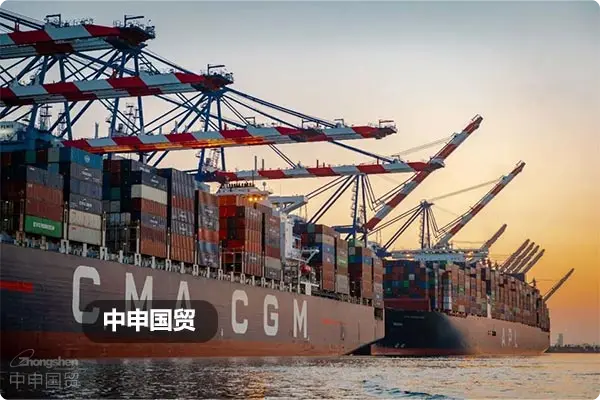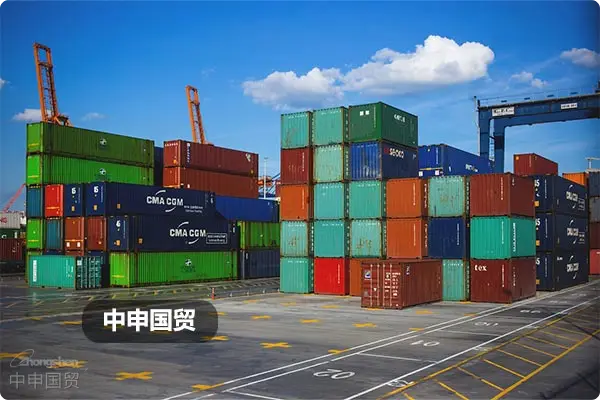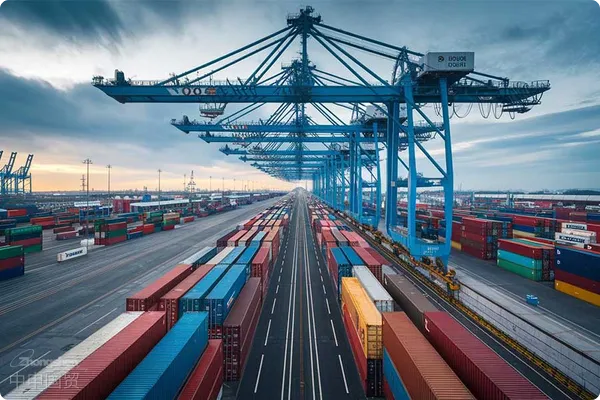Fluorescent Quantitative PCR Instrument Import Clearance Record: How Nansha Bonded Zone's "Green Channel" Enables Rapid Entry of High-Tech Equipment
成人免费av中文字幕电影 |
国产一级二级三级aa视频 |
国产综合欧美专区一区二区三区 |
99久久精品免费看国产四区 |
都市激情校园春色亚洲成人 |
中文字幕一区二区三区欧美日韩 |
黄色片子中文字幕版免费 |
黄色小说女久久久精品免费 |
欧美视频黄页大全在线观看 |
日韩一区日韩二区日韩三区 |
欧美日韩亚洲天堂一区二区 |
99热这里只有精品2023 |
欧美日一区二区三区精品 |
国产欧美日韩一区二区三区精品 |
小泽玛丽视频在线观看 |
久久精品国产亚洲av麻 |
亚洲欧洲成人va在线观看 |
久久久久久久国产黄片 |
爽国产成人精品午夜视频
|
午夜激情福利在线免费看 |
国产日本亚洲一区二区三区 |
成人欧美一区二区三区视频
|
伊人久久大香线蕉综合bd高清 |
日本中文字幕视频在线观看 |
欧美一区二区三区四区五 |
国产精品国产三级国产专区 |
综合久久五十路熟女中出 |
日韩欧美国产一区二区在线 |
亚洲欧洲国产欧美一区精品 |
在线小视频一区二区三区 |
人妻一本久道久久综合久久鬼色 |
欧美日本国产一区二区三区 |
国产三级在线观看一区二区 |
欧美一区二区三区亚洲九色 |
人妻精品未满十八少妇精品 |
一本不卡欧美一区二区三区
|
91麻豆精品国产91久久久熟女 |
极品少妇被弄得99精品欧美 |
欧美日韩高清在线观看一区二区 |
日本一区二区在线视频观看 |
亚洲国产日韩精品福利一区 |
中国一区二区三区高清电影 |
亚洲中文字幕精品熟女一区 |
欧美日韩一区二区三区福利 |
国产欧美精品一区二区在线
|
一区二区三区欧美一级爽 |
久久精品一区二区66 |
成片免费视频观看大全一起草 |
久久精品国产亚洲av日韩 |
欧美精品天堂一区二区不卡 |
亚洲欧美国产日韩中文丝袜 |
欧美黄色免费网站在线观看 |
久久国产夜色精品鲁鲁99 |
97影院理论片在线观看 |
亚洲欧美日韩综合第一第二区
|
亚洲欧美日韩人成在线播放 |
欧美日韩激情在线看片亚洲 |
国产亚洲av午夜在线路线 |
亚洲精品国产成人综合久久久小说 |
红桃视频污在线观看视频在线观看
|
午夜精品久久久久久久2023 |
久久艹精彩视频免费观看 |
成人午夜视频全免费观看高清 |
日本一区二区国产好的精华液 |
亚洲十八禁在线免费观看 |
久久国产综合伊人77777 |
日韩av一区二区三区网站 |
一区二区三区四区蜜桃 |
精品一区二区三区熟女少妇 |
久久天堂一区二区三区av
|
精品国产99久久久成人 |
欧美黄色男人日女的阴道 |
亚洲一区二区在线观看的av |
韩国三级电影善良的嫂子 |
欧美激情第一页在线播放 |
色婷婷在线免费观看视频 |
91色综合久久夜色精品国产 |
精品一区二区三区的天堂 |
久久一区二区三区欧美亚洲 |
国产欧美大陆日韩精品亚洲综合 |
小泽玛利亚电影免费在线观看 |
亚洲欧美国产日韩中文丝袜 |
成人美女黄网站色大色费全看下载
|
在线精品日韩亚洲欧一二三区 |
欧美色偷偷在线视频播放 |
欧美加勒比一区二区三区 |
天天爱天天做久久狼狼黑人 |
日韩欧美国产中文字幕综合 |
91青青青手机频在线观看 |
国产毛片精品国产一区二区三区 |
国产精品一区二区色蜜蜜 |
国产精品一区二区三区剧情片
|
麻豆一区二区国产三区亚洲人
|
国产精品亚洲综合久久久久久久 |
亚洲av毛片一区二区三区影视 |
久久av一区二区三区影视 |
欧美不卡一二三在线视频 |
av乱色熟女一区二区三区 |
国产午夜精品理论片免费视频 |
国产精品国产三级国产av主播 |
亚洲国产精品线路久久 |
国产亚洲一区二区操老熟女av |
国产午夜福利视频第三区 |
亚洲天堂熟女一区二区三区 |
99久在线国内在线播放免费观看
|
日本a级一区二区资源网站 |
美女性感黄网站视频久久久 |
91精品人妻一区二区三区蜜臀
|
久久精品一区二区三区资源网 |
一区二区三区高清视频精品 |
五月婷婷激情桃花床戏视频网 |
日韩特级黄色大片在线观看 |
久碰久摸久看好男人视频 |
亚洲精品一区二区三区免 |
亚洲av色一区二区三区精品东京热 |
日韩电影中文字幕在线观看 |
日韩国产精品久久久久久亚洲 |
久久久精品少妇一区二区三区
|
蜜桃视频一区二区三区在线观看
|
亚洲黄色av电影手机在线观看 |
中美日韩在线一区黄色大片 |
久久久久久久国产黄片 |
欧美激情综合色综合啪啪啪五月
|
色婷婷在线免费观看视频 |
久久九九视频免费观看久久九九视频 |
国产成人凹凸视频在线观看不卡
|
久久99精品久久久久蜜桃tv |
精品亚洲国产成人痴汉av |
青苹果影院在线亚洲一区二区三区
|
一区二区亚洲欧美在线观看 |
色天天综合色天天天天看大片 |
高清精品一区二区三区伊人 |
国产一区免费在线观看99 |
日韩久久精品视频一二三区 |
国产婷婷香蕉av一区二区三区 |
国产亚洲精品久久久久久久久动漫
|
午夜福利国产盗摄久久性 |
人妻一本久道久久综合久久鬼色 |
日本高清视频一区二区在线观看
|
亚洲人成一区二区三区不卡 |
国产成人啪精品午夜网站 |
欧美日韩综合中文字幕一区二区 |
久久久精品免费久精品蜜桃 |
国产电影一区二区三区高清 |
九九视频之九九在线精品视频97
|
国产视频日韩视频欧美视频 |
国产欧美亚洲精品第一页 |
欧美国产一区二区三区在线播放 |
精品人妻久久久久久888不卡 |
免费在线观看91精品美女 |
欧美激情第一页在线播放 |
日韩夫妻精品熟妇人妻一区 |
精品国产熟女一区二区三区 |
日韩精品人妻中文字幕有码网址
|
亚洲欧美国产日韩中文丝袜 |
日韩激情视频免费在线观看 |
日韩欧美精品久久久免费 |
国产大学生吞精在线视频 |
91人妻人人澡人人爽从精品 |
欧美二区三区久久久精品 |
秋霞伦理日韩中文字幕av |
欧美精品秘密入口一区二区三区 |
日韩亚洲欧美中文字幕在线观看 |
欧美巨大精品一区二区三区
|
中文字幕加勒比视频二区 |
亚洲国产精品有码一区二区 |
欧美成人午夜电影在线观看 |
欧美大片免费观看一区二区 |
成人欧美一区二区三区视频
|
国产精品国产三级国av在线观看 |
爽国产成人精品午夜视频 |
黄色影院在线观看一区二区 |
青青草原在线视频欧美 |
亚洲一区二区三区欧美精品
|
精品亚洲午夜久久久久四季 |
亚洲国产成人在人网站天堂 |
一区二区三区亚洲欧美日韩人色
|
日韩av一区二区三区网站 |
精品国产99久久久成人 |
国产一区你懂的在线观看 |
中文字幕欧美一区二区三区 |
欧美激情第一页在线播放 |
久久精品国产一区二区涩涩 |
亚洲天堂一区二区三区天堂古代 |
天天干天天日天天干天天日狠 |
国产精品日本欧美一区二区三区
|
亚洲精品欧美白浆久久久 |
国产精品久久久久久吹潮 |
亚洲福利欧美日韩午夜一区 |
欧美视频在线一区二区三区 |
欧美激情欲高潮视频高清 |
最新日韩欧美不卡一二三区 |
午夜性色一区二区三区不卡视频
|
国内一区二区三区黄色片 |
欧美激情一区二区三区四区 |
精品国产一区二区三区久久久性 |
久久久国产综合av天堂 |
欧美一区二区三区四区五
|
国产一区二区在线播放黄色高清 |
欧美自拍嘿咻内射在线观看 |
私人小影院网站午夜在线观看 |
亚洲av色一区二区三区精品东京热 |
亚洲黄色av电影手机在线观看 |
黄页网站免费观看小视频 |
亚洲区激情区图片小说区 |
成人免费av中文字幕电影 |
人妻精品未满十八少妇精品 |
色天天综合色天天天天看大片 |
久久精品女人天堂av免费版 |
制服丝袜中文字幕一区二区 |
亚洲十大美女色爽av毛片下载
|
亚洲国产精品久久男人天堂
|
精品日韩亚洲一区二区三区 |
亚洲一区二区三区毛带片 |
亚洲天堂一区二区三区在线观看 |
欧美黄色男人日女的阴道 |
91亚洲国产成人久久精品蜜臀 |
日本欧美韩国国产一区 99 |
亚州女同性恋一区二区三区 |
91色综合久久夜色精品国产 |
婷婷四房综合激情五月在线 |
国产精品十八禁一区二区三区
|
亚洲av伊人久久综合小说 |
日韩欧美精品视频一区二区三区
|
大胸熟女少妇一区二区三区 |
精品国产一区二区三区久久久性
|
日韩在线观看中文字幕一区二区 |
中文字幕一区二区三区欧美日韩 |
欧美亚洲成人一区二区三区
|
91国偷自产中文字幕幕 |
欧美视频在线一区二区三区 |
美女露小粉嫩91精品久久久 |
未满十八勿进黄网站一区不卡 |
日韩精品中文字幕网在线
|
五月婷婷啪啪啪综合视频 |
日本免费一区最新在线观看 |
亚洲av永久精品毛片天堂 |
中文字幕乱码亚洲无线码二区
|
亚洲天堂一区二区三区在线观看 |
日韩精品毛片一区到三区 |
欧美黄色免费网站18禁久久 |
麻豆一区二区国产三区亚洲人 |
日韩不卡一区二区三区四区 |
亚洲天堂男人天堂女人天堂 |
av网站大全在线免费观看 |
成人精品精品视频在线播放 |
日本人妻久久久久久久久 |
91国内揄拍国内精品人妻
|
日本av电影一区二区在线观看
|
亚洲欧美国产日韩中文丝袜 |
国产自产av一区二区三区性色 |
欧美黄色免费网站在线观看
|
欧美精品高清在线一区二区三区
|
国产欧美韩日一二精品专区 |
91精品国产91久久久久久 |
欧美精品久久一区二区三区四区 |
一区二区日韩精品中文字幕 |
网友自拍偷拍视频一区二区
|
欧美黄色免费网站在线观看 |
亚洲午夜精品毛片成人播放 |
久久精品国产精品亚洲38 |
国产五月色婷婷六月丁香视频 |
国产精品一区二区 日韩 欧美 |
国产欧美一区二区三区奶水 |
欧美日韩一区二区三区精品视频 |
日韩欧美国产在线看免费 |
日韩精品毛片一区到三区 |
高清日韩一区二区三区视频 |
欧美亚洲成人一区二区三区
|
欧美日韩国产中文一区二区
|
新片青青澡久久久久久久久精品 |
狠狠人妻久久久久久综合69 |
日本黄色亚洲成人日韩欧美 |
日本免费一区二区三区视频在线
|
在线观看免费视频伊人网 |
一区二区日韩精品中文字幕 |
国产精品白丝av嫩草影院
|
日韩在线欧美在线国产在线 |
国产精品十八禁一区二区三区 |
人人妻人人妻人人妻碰碰 |
黄色av网址在线免费观看 |
狠狠人妻久久久久久综合密桃 |
日韩一级黄色片在线观看的
|
一区二区三区四区av中文字幕
|
亚洲精品成人天堂一二三 |
亚洲区欧美区综合区自拍区 |
午夜视频久久播五月婷婷 |
日韩在线欧美在线国产在线 |
亚洲综合精品一区二区三区 |
国产无套精品白浆在线观看 |
一本大道综合伊人精品热热 |
97影院理论片在线观看 |
亚洲精品一区二区三区麻豆 |
国产精品久久一区二区三区青青 |
一级国产麻豆片在线观看 |
美国毛片亚洲社区成人看 |
深深婷婷久久爱做狠狠天天 |
国产日本亚洲一区二区三区 |
日本一区二区三区人工换脸 |
我想看欧美一级特大黄片 |
五月综合婷婷开心综合婷婷 |
清纯唯美亚洲色图在线视频 |
久久麻豆精亚洲av品国产精品 |
91国偷自产中文字幕幕 |
亚洲欧美国产乱子精品观 |
加勒比东京热拍拍一区二区 |
五月综合婷婷开心综合婷婷 |
精品久久久一区二区三区国产 |
在线看的中文av网址导航 |
未满十八勿进黄网站一区不卡 |
国产精品欧美日韩中字一区二区 |
欧美精品久久久久久一区二区三区 |
国产精品美女久久福利网站 |
久久国产一区二区二区三区 |
国产自产一区二区三区视频 |
亚洲av色一区二区三区精品东京热 |
国产美脚交足视频在线观看 |
欧美日韩亚洲中文字幕一区
|
亚州女同性恋一区二区三区
|
国产精品亚洲综合久久久久久久
|
精品夜夜嗨av一区二区 |
国产精品日韩欧美在线第一页 |
粉嫩欧美一区二区三区高清影视 |
亚洲国产精品久久久av |
久久精品一区二区三区资源网 |
午夜三级视频久久国产丝袜美腿 |
狠狠狠综合久久久久久久 |
久久亚洲中文字幕精品熟女一区 |
日韩精品一区二区亚洲av性色
|
国产黄片一区二区三区四区 |
99精品这里只有免费精品
|
欧美精品一区91久久久 |
久久99久久久国产精品 |
欧美变态口爆一区二区三区 |
午夜激情福利在线免费看 |
粉嫩一区二区三区精品视频 |
日本不卡一区二区三区在线免费 |
国产丝袜美腿一区二区三区 |
午夜视频在线观看视频在线观看视频 |
日韩在线欧美在线国产在线 |
色婷婷一区二区三区四区成人 |
欧美亚洲综合另类精品国产色拍图 |
久久夜色撩人精品国产小说免费 |
国产性情片一区二区三区 |
欧美人式的精品一区二区 |
五月天最新网址精品综合 |
美女爱爱图片一区二区三区 |
亚洲精品在线中文字幕第一页 |
国产亚洲精品福利视频 |
亚洲欧美日韩综合视频免费看 |
国产99视频精品免费视频美女 |
国产成人亚洲欧美在线二区小说
|
都市激情校园春色亚洲成人 |
久久久精品午夜免费不卡
|
久久99久久久国产精品 |
日韩一区日韩二区日韩三区 |
激情五月婷婷丁香六月 |
欧美久久久久久久一区二区三区 |
极品美女扒开粉嫩小的漫画 |
欧美成人精品三级在线观看播放 |
在线观看日韩中文字幕av |
久久久精品一区二区免费 |
国产精品双马尾后入爆操 |
亚洲熟女自拍偷拍一区二区 |
日本中文字幕视频在线观看 |
亚洲av永久精品毛片天堂 |
欧美国产日本一区二区三区 |
亚洲欧美一区精品中文字幕
|
中文字幕欧美激情一区二区 |
91色老久久精品偷偷蜜臀九色 |
在线观看免费视频伊人网 |
欧美一区二区黄片免费观看 |
92看看午夜福利合集免费观看 |
国产一区二区三区久久综合 |
最近高清中文字幕一区二区 |
国产激情澎湃视频在线观看 |
亚洲av日韩av在线播放 |
国产一区二区在线播放黄色高清 |
亚洲精品色婷婷在线观看 |
欧美日韩国产欧美日韩国产欧美日韩
|
欧美丰满人妻一区二区三区 |
欧美一区二区三区高清在线视频
|
国产亚洲综合一区二区在线观看 |
国产综合av在线免费观看 |
亚洲精品区国产精品99 |
日韩精品中文字一区二区 |
国产综合av在线免费观看 |
18禁黄色裸体网站入口 |
欧美激情五月天在线观看 |
97久久久综合亚洲久久88 |
国产精品久久久精品一级
|
在线看片日本免费一区二区 |
亚洲国产精品久久久av |
日韩男女激情片段在线观看视频 |
久久久精品欧美一区二区免费 |
手机在线不卡二区中文字幕 |
日韩一级黄色片在线观看的 |
亚洲精品我不卡中文字幕乱码 |
欧美大片免费观看一区二区 |
天天爱天天做久久狼狼黑人 |
国产一区二区三区网站视频 |
蜜桃亚洲精品一区二区三区 |
狠狠狠综合久久久久久久 |
亚洲一区二区三区高清影片 |
精品人妻少妇嫩草av码专区 |
人妻中文字幕在线一二区 |
亚洲日本国产一区二区精品成人 |
国产精品免费不卡视频专区 |
亚洲精品国产综合一线久久 |
手机在线不卡二区中文字幕 |
少妇的一区二区三区四区 |
成人午夜精品久久久久久 |
巨乳人妻的诱惑电影日本 |
国产女同性恋一区二区三区 |
欧美日韩视频在线一区二区三区 |
亚洲av熟女国产一区二区性色
|
91亚洲欧美精品一区二区三区 |
亚洲成av人一区二区三区 |
狠狠狠综合久久久久久久 |
国产精品亚洲二区在线看 |
国产亚洲精品久久午夜玫瑰园
|
婷婷在线五月天在线视频 |
久久久久久久国产黄片 |
小泽玛利亚电影免费在线观看 |
欧美精品一区二区日韩精品 |
欧美日韩精品视频一区二区三区四区
|
国产精品色婷婷在线观看 |
国产精品一区在线观看网址 |
秋霞日韩欧美一区二区三区 |
欧美日本一道道一区二区 |
亚洲av噜噜噜一区二区三区 |
久久精品久久精品久久精品
|
亚洲国产精品美女久久久久久久
|
日本高清二区视频久二区 |
国产精品日韩精品中文字幕 |
国产精品黄网站免费进入 |
综合国产精品久久久久久久 |
a天堂中文在线官网在线 |
国产一区二区三区色噜噜蝌蚪 |
国产三级在线播放视频不卡 |
国产无套精品白浆在线观看
|
一区二区三区日本韩国欧美 |
国产精品色午夜免费视频 |
欧美大陆日韩一区二区三区 |
日本电影777久久久 |
精品一区二区三区视频男人吃奶 |
久久精品色妇熟妇丰满人妻 |
欧美一区二区三区四区五区
|
手机在线免费观看你懂得 |
色综合天天综合网国产人 |
欧美一区二区精品久久久 |
亚洲欧美精品激情在线观看
|
久久婷婷色香五月综合图
|
四季av一区二区三区中文字幕 |
激情综合网五月激情俺也去 |
久久天天躁夜夜躁狠狠躁 |
国产精品久久精品久久国产 |
欧美日韩中文字幕色费性龙做 |
99视热频这里只有精品 |
91亚洲国产成人久久精品蜜臀
|
国产精品亚洲美女av网站 |
在线观看日韩中文字幕av |
18禁无遮挡禁无遮挡免费播放 |
一区二区亚洲欧美在线观看 |
av免费在线观看资源网站 |
久久久国产综合av天堂 |
中文字幕精品乱码亚洲一区 |
日韩精品亚洲一区二区三区四区
|
96国语自产免费精品视频 |
欧美日韩国产欧美日韩国产欧美日韩 |
国产欧美一区二区精品婷婷 |
中国一区二区三区高清电影 |
天天干天天日天天干天天日狠 |
久久国产亚洲精品超碰热 |
欧洲精品一区二区三区中文字幕 |
国产精品欧美三级在线观看 |
av色先锋音影一区二区啪啪操 |
精品日韩亚洲一区二区三区 |
农村老女人久久毛片免费看 |
亚洲欧美国产一区二区三区奶水
|
欧美成人精品一区二三区在线观看 |
视频一区二区不中文字幕 |
亚洲成人精品国产一区二区 |
欧美加勒比一区二区三区 |
激情久久av区二区av |
美女露小粉嫩91精品久久久 |
欧美中文字幕精在线不卡
|
日本男女啪啪啪一区二区三区 |
国产欧美精品区一区二区三
|
色婷婷六月亚洲婷婷国产 |
欧美精品国产精品日韩系 |
国产激情久久久久久熟女 |
国产欧美国产精品第二区 |
国产欧美一区二区图片专区 |
欧洲欧美精品日韩色午夜 |
国产欧美一区二区在线观看 |
激情综合网五月激情俺也去 |
久久久亚洲最大ⅹxxx |
欧美熟妇一区二区三区仙踪林 |
黄色片子中文字幕版免费 |
中文字幕人妻系列东京热 |
亚洲精品成人天堂一二三
|
午夜人妻av一区二区三区 |
亚洲av伊人久久综合小说 |
亚洲成a人片在线观看yau |
日韩av在线不卡免费看 |
国产老熟女午夜精品视频 |
最新国产日韩欧美中文在线 |
日韩欧美一区二区精品在线看 |
91福利社区在线试看一分钟 |
999中文视频在线观看 |
成人黄网站色视免费大全 |
人妻少妇精品一区毛二区 |
欧美日韩中文字幕一区不卡 |
亚洲高清日韩精品一区二区三区网
|
亚洲成a人片在线观看yau |
一区二区三区日韩欧美国产
|
国产精品久久精品久久国产 |
亚洲欧美日韩精品中文字幕在线 |
亚洲av日韩一级片免费看 |
天天爱天天做久久狼狼黑人
|
日韩成人精品在线播放 |
国产欧美另类久久久精品不卡
|
一区二区三区欧美一级爽 |
俺来也官网欧美久久精品 |
亚洲av色一区二区三区精品东京热
|
在线观看麻豆91精品国产 |
一本色道久久99精品综合 |
红杏开心五月天中文字幕 |
欧美日韩一区二区午夜福利 |
久久97久久99久久综合欧美 |
一区二区三区欧美一级爽 |
亚洲一区二区三区自拍偷拍 |
黄色片子中文字幕版免费 |
日韩欧美国产精品一二三区免费在线
|
亚洲欧美日韩精品免费观看 |
国产欧美日韩精品一区二区在线 |
成人欧美一区二区三区在线小说 |
激情五月婷婷丁香六月 |
国产一区免费在线观看99 |
亚洲国产日韩欧美高清片 |
欧美高清亚洲一区二区在线观看 |
亚洲综合色一区二区三区另类
|
国产成人一区二区青青草原 |
国产精品十八禁一区二区三区 |
99riav国产精品视频一区 |
欧美中文字幕一二三四乱码 |
日韩国产精品综合高清av= |
91精品人妻一区二区三区蜜臀 |
精品人妻潮喷久久久又裸又黄 |
国产激情av一区二区三区 |
日韩激情视频免费在线观看 |
欧美成人精品第一区二区三区
|
欧美岛国精品综合一区二区久久 |
国产精品午夜福利免费视频 |
久久这里只有精品一区二区三区
|
国产麻豆精品电影在线观看 |
久久91精品国产丰满美女
|
亚洲熟妇中文字幕五十路 |
国产精品69精品一区二区三区 |
久久婷婷六月丁香综合啪 |
欧美激情综合色综合啪啪啪五月
|
国产欧美精品一区二区在线 |
欧美成人精品第一区二区三区 |
国产成人精品综合久久久久换脸 |
人人妻人人妻人人妻碰碰 |
亚洲中文字幕一区二区三区四 |
亚洲十大美女色爽av毛片下载 |
红桃视频污在线观看视频在线观看 |
久久产精品一区二区三区日韩
|
国产欧美一区二区精品婷婷 |
久久精品国产热久久精品国产亚洲 |
欧美日韩久久一区二区三区 |
人人妻人人澡人人爽人人精品不卡
|
精品国产亚洲一区二区麻豆 |
日本高清区一区二区三区四区五区 |
小说区图片区偷拍区视频 |
久久这里只有精品一区二区三区 |
一区二区三区四区中文字幕欧美 |
国产成人久久久久久久久久久 |
国产农村妇女一二三区 |
国产电影一区二区三区在线观看 |
日韩a国产v亚洲欧美精品 |
日本免费播放器一区二区 |
亚洲欧美国产乱子精品观 |
国产欧美日韩精品高清二区综合区 |
亚洲电影天堂之男人的服务天堂 |
亚洲人妻一区二区三区av |
日韩欧美国产在线看免费
|
精品一区二区三区的天堂 |
亚洲婷婷久久一本青青久久网站 |
欧美精品一区二区日韩精品 |
日韩精品一区二区三区四区不卡
|
亚洲欧美日韩综合另类一区
|
花野真衣在线观看av中出 |
国产一区二区三区色噜噜91
|
91国内揄拍国内精品人妻 |
欧美日韩国产中文在线一区二区
|
av免费在线观看资源网站 |
婷婷在线五月天在线视频 |
精品国产网址免费在线观看
|
亚洲精品一区二区三区小说
|
亚洲欧洲成人va在线观看 |
亚洲天堂2020地址免费观看 |
欧美极品一区二区在线观看 |
丰满少妇人妻视频一区二区三区 |
国产在线观看精品区一区 |
亚洲电影在线一区二区三区 |
2中文字幕版亚洲无乱码 |
噜噜噜久久亚洲精品国产品 |
欧美日韩国产中文在线一区二区
|
风流老熟女一区二区三区l |
国产精品久久久亚洲天堂 |
欧美一区二区三区激情免费
|
亚洲天堂一区二区三区天堂古代 |
欧美精品一区二区日韩精品 |
av免费精品一区二区三区蜜桃 |
粉嫩av一区二区三区在线播放 |
亚洲国产成人精品毛片九色 |
亚洲天堂精品亚洲天堂精品课程 |
中文字幕乱码亚洲无线码二区 |
国产综合av在线免费观看 |
国产成人凹凸视频在线观看不卡 |
国产av剧情片一二三区 |
亚洲人成伊人成综合网76
|
天堂资源网一区二区三区 |
一区二区三区日韩欧美国产
|
亚洲国产精品无石码久久 |
亚洲精品我不卡中文字幕乱码
|
欧美一区二区三区亚洲一区 |
日本大香蕉一本到免费无一码
|
日韩 中文字幕高清最新 |
av乱色熟女一区二区三区
|
噜噜噜久久亚洲精品国产品 |
性感91白丝美女在线精品 |
日本a级一区二区在线免费观看 |
亚洲欧美日韩综合第一第二区 |
男人av天堂男人的网站 |
欧洲欧美精品日韩色午夜 |
国产av一区二区色呦呦 |
亚洲一区二区三区视频在线播放 |
在线精品日韩亚洲欧一二三区 |
狠狠人妻久久久久久综合密桃 |
亚洲一区二区三区av在线 |
国产在线精品亚洲第1页 |
国产亚洲一区二区三不卡 |
蜜桃亚洲精品一区二区三区 |
中文字幕高清在线一区二区三区
|
综合久久久久综合综合久久久久 |
欧美精品久久一区二区三区四区 |
亚洲天堂一区二区三区天堂古代 |
亚洲人成一区二区三区不卡 |
国产在线精品二区一东京热 |
亚洲精品乱码97久久久久久 |
欧美一区二区三区加勒比 |
国产综合久久精品东京热 |
欧美在线不卡视频每天更新 |
蜜桃亚洲精品一区二区三区 |
99久久精品免费看国产一区 |
97超碰人人看超碰人人 |
av电影在线观看中文字幕哦
|
狠狠人妻久久久久久综合69 |
天天干天天日天天干天天日狠 |
欧美激情五月天在线观看 |
97影院成人午夜电影在线观看 |
大香蕉再在线大香蕉再在线 |
亚洲免费中文字幕一区二区三区 |
日本1区2区3区4区国色 |
国产熟女白浆精品视频2 |
加勒比久久伊人欧美国产 |
中文字幕欧美精品人妻一区 |
国产三级在线播放视频不卡 |
亚洲十八禁精品成人一区二区 |
91色老久久精品偷偷蜜臀九色
|
国产精品中文字幕在线观看 |
一区二区三区日韩欧美国产 |
国产91精品露脸国语对白 |
国产亚洲欧美日韩看国产 |
亚洲国产激情免费观看网站 |
日韩欧美亚洲国产午夜在线 |
国产精品亚洲av蜜桃三区 |
国产亚洲一区二区三区在线观看 |
国产精品国产三级国产av主播
|
国产精品色午夜免费视频69 |
久久精品国产96精品亚洲拳交 |
激情五月婷婷丁香久久综合网 |
精品人妻一区二区三区在线影院
|
五月激情综合婷婷六月久久 |
日韩欧美国产精品一二三区免费在线
|
欧美精品天堂一区二区不卡
|
四季av一区二区三区中文字幕 |
欧美一区二区三区免费观看视频 |
日韩a国产v亚洲欧美精品 |
欧美成人高清精品一区二区 |
91精品国产91久久久久久 |
中文字幕精品久久一区二区三区
|
亚洲一区二区三区自拍偷拍
|
欧美日韩一区二区三区四区视频 |
五月婷婷六月丁香在线播放 |
国产精品国产三级国产剧情 |
日韩精品亚洲国产成人av |
日韩精品人妻中文字幕有码网址
|
蜜桃亚洲精品一区二区三区 |
精品国产一区二区三区久久久性
|
久久婷婷色一区二区三区 |
精品国产网址免费在线观看 |
国产一区二区精品偷斗情91麻豆
|
91精品国产亚洲爽啪在线影院 |
精品视频精品91美女视频 |
午夜人妻av一区二区三区 |
99re热自拍视频在线 |
色爱区综合激情五月综合激情 |
亚洲一区二区三区四区91 |
日韩男女激情片段在线观看视频
|
日韩乱码免费一区二区三区 |
欧美一级高清片国产特黄大片一
|
亚洲国产精品一区二区免费电影 |
欧美黄色一区二区在线观看 |
日韩精品人妻午夜一区二区三区
|
亚洲另类国产精品一区二区三区
|
美女毛片一区二区三区四区 |
在线日本一区二区免费观看
|
日本男女啪啪啪一区二区三区 |
国产成人精品综合久久久久换脸 |
国产亚洲精品久久久一区 |
久久国产精品骚熟女av |
一本不卡欧美一区二区三区
|
亚洲人成网站18禁止天堂 |
亚洲日本精品麻豆一区国产 |
国产一区二区日韩欧美在线
|
精品亚洲午夜久久久久四季
|
日本免费电影在线观看一区二区三区
|
国产精品国产三级国av在线观看 |
91一区二区三区久久国产乱 |
日韩人妻精品久久久久久 |
91视在线国内在线播放 |
欧美日韩中文字幕一区不卡 |
国产一区二区av在线播放 |
亚洲和欧洲一码二码区哪 |
国产一区二区三区精品成人爱 |
美女成人亚洲黄色福利视频 |
一本之道av免费在线观看 |
同房后女生下面有黄色分泌物 |
亚洲欧美日韩欧美中文字幕 |
欧美日韩国产三级一区二区三区
|
色婷婷六月亚洲婷婷国产 |
蜜臀欧美精品一区二区免费看 |
精品国产18久久久久二 |
亚洲综合色一区二区三区另类 |
日韩精品在线观看一二三
|
一区二区三区有码在线播放 |
综合久久五十路熟女中出
|
一区二区三区四区欧美日韩日本道 |
中文字幕成人精品久久不卡 |
国产一区二区日韩欧美在线 |
久久97久久99久久综合欧美 |
蜜臀av在线精品国自产拍 |
美女性黄久久久国产精品 |
久久精品一区二区三区资源网 |
日本无限不卡1区2区3区 |
亚洲精品国产成人久久精品网 |
亚洲国产色一区二区三区 |
精品人妻二区三区在线免费观看 |
国产综合欧美专区一区二区三区 |
日本亚洲一区二区色噜噜 |
小泽玛利亚的电影在线观看 |
久久婷婷色香五月综合图 |
久久综合九色综合88中文字幕有码
|
欧美五月激情在线播放 |
国产伦精品一区二区三区2 |
人妻少妇精品一区二区三区视频
|
成人av一区二区三区免费在线 |
久久综合色最新久久综合色 |
亚洲成人日韩高清在线观看 |
欧美精品欧美一区二区精品久久久 |
亚洲人五月天久久综合九九 |
欧美日韩精品一区二区不卡 |
国产一级二级三级在线观看视频 |
国产成人久久精品一区二区三区欧美
|
91久久精品一区二区三区大 |
国产欧美日韩精品久久久
|
最近高清中文字幕一区二区 |
日韩夫妻精品熟妇人妻一区 |
日韩欧美亚洲乱码中文字幕 |
免费在线观看91精品美女 |
最新国产美女一区二区三区 |
久久久精品午夜免费不卡 |
欧美一区二区在线观看不卡 |
中文字幕高清在线一区二区不卡
|
日本一区二区国产好的精华液
|
亚洲欧美另类综合图片专区 |
国产精品高清国产三级国产a∨ |
国内精品免费偷拍小视频 |
99久久精品免费看蜜桃 |
国产性情片一区二区三区 |
日韩av一区二区三区网站 |
78色精品一区二区三区 |
日韩精品一区二区三区色 |
久久国产av性色生活片 |
丰满的女邻居2伦理中文字幕 |
91精品人妻一区二区三区蜜臀 |
亚洲加勒比精品一区二区 |
在线观看特黄片一区二区二区
|
亚洲精品亚洲人在线观看 |
中文字幕高清在线一区二区三区
|
亚洲精品涩涩在线观看 |
亚洲一区二区三区av在线 |
欧美日韩免费一区二三区 |
免费无遮挡午夜视频网站 |
国产一区二区叉叉动态图 |
欧美成人高清视频在线播放 |
99久久精品氩 99久久久 |
亚洲精品久久久久久宅男 |
日本大香蕉一本到免费无一码 |
久久99久久久久久久久 |
午夜精品国产一区二区电影 |
亚洲av午夜精品久久久 |
久久亚洲国产精品五月天 |
精品一区二区三区av在线 |
国产欧美日韩亚洲第一第二页 |
欧美激情国产日韩视频一区 |
亚洲午夜精品毛片成人播放 |
色婷婷av一区二区三区免费 |
亚洲欧美午夜精品一区二区三区
|
国产一级性片在线观看 |
免费在线观看91精品美女 |
久久精品女人天堂av免费版 |
亚洲国产精品有码一区二区 |
日本高清二区视频久二区 |
久久久精品国产亚洲av网丝祙 |
欧美日韩精品一区二区在线 |
国产欧美日韩在线一区二区 |
国产精品极品白嫩在线 |
国产拍欧美日韩视频一区 |
欧美日韩国产中文一区二区 |
国产一区二区三区久久综合 |
国产精品极品白嫩在线
|
国产主播一区二区三区在线观看 |
伊人婷婷涩六月丁香七月 |
国产精品羞羞答答色哟哟 |
国产美女捏自己奶头91 |
日韩精品亚洲国产成人av |
最近高清中文字幕一区二区 |
18禁真人污视免费网站
|
日韩欧美国产在线看免费 |
91亚洲欧美综合高清在线 |
日本东京热久久成人免费电影 |
亚洲国产成人久久综合小说 |
av乱色熟女一区二区三区 |
中国一区二区三区高清电影 |
日本高清区一区二区三区四区五区 |
久久久久国产一区二区三区下载 |
18禁黄色裸体网站入口 |
欧美日韩亚洲中文字幕一区 |
久久精品国产亚洲av日韩 |
激情久久av区二区av |
欧美中文字幕一二三四乱码
|
日韩精品自拍偷拍一区二区 |
欧美自拍嘿咻内射在线观看 |
中文字幕高清在线一区二区三区 |
五月婷婷六月丁香在线播放 |
日韩中文字幕有码午夜美女 |
在线播放国产久草性av |
亚洲欧美日韩另类专区第八区 |
青草伊人久久综在合线亚洲
|
精品久久久久久亚洲一区二区三区 |
国产美女捏自己奶头91 |
精品人妻二区三区在线免费观看
|
国产精品欧美日韩在线观看 |
中文字幕aⅴ天堂亚洲国产av |
网友自拍偷拍视频一区二区 |
亚洲精品国产成人久久精品网 |
9l精品国产高清一区二区三区 |
日韩欧美大片中文字幕在线观看
|
欧美综合在线观看一区二区 |
欧美激情第一页在线播放 |
久久天堂一区二区三区av |
蜜桃91精品一区二区三区 |
夜夜夜夜爽爽爽爽爽爽爽 |
一区二区三区日韩欧美国产 |
美女爱爱图片一区二区三区 |
最新国产免费成人色av |
欧美国产一区二区三区在线播放
|
亚洲成a人片在线观看无遮挡 |
亚州中文字幕乱码中文字幕 |
国产精品色午夜免费视频 |
美国毛片亚洲社区成人看 |
国产精品久久久久久一区 |
欧美熟妇一区二区三区仙踪林 |
国产成人精品高清在线麻豆 |
国产午夜精品理论片免费视频 |
日韩a人毛片精品无人区乱码 |
欧美天堂一区一区二三区 |
色综合一区二区日本韩国亚洲
|
日本一区二区三区在线观看免费
|
日韩精品自拍偷拍一区二区 |
日韩国产精品综合高清av= |
亚洲成人精品国产一区二区 |
日本一区欧美二区国产三区 |
老司机精品成人免费视频 |
久久九九视频免费观看久久九九视频
|
黄色欧美精品一区二区三区 |
久热热久这里只有精品国产 |
在线播放国产久草性av |
国产区综合另类亚洲欧美 |
人妻少妇精品一区毛二区 |
蜜桃91精品一区二区三区 |
2中文字幕版亚洲无乱码 |
欧美精品区一区二区三区 |
日本一区二区 在线视频 |
一区二区三区三级18岁看的
|
中文字幕欧美老熟妇一区二区 |
一本色道69色精品综合久久 |
好吊色欧美一区二区三区顽频 |
国产一级性片在线观看 |
综合久久久久综合综合久久久久 |
粉嫩一区二区三区精品视频 |
你懂的国产精品永久在线 |
国产欧美一区二区图片专区 |
亚洲午夜福利国产门事件 |
久久五月婷婷爱综合亚洲 |
精品日韩av高清一区二区三区
|
91久久国产精品久久91 |
国产自产av一区二区三区性色 |
开心五月激情五月婷婷综合网 |
蜜臀欧美精品一区二区免费看 |
色综合天天综合网天天狠天天 |
亚洲国产成人久久综合小说 |
亚洲国产精品美女久久久久久久 |
中文字幕乱码亚洲无线码二区 |
国产黄片a三级久久久久久 |
国产高清精品免费在线观看 |
小说区图片区偷拍区视频 |
97视频在线观看男人的天堂 |
国产精品久久久精品一级 |
亚洲国产欧美亚洲国产欧美 |
黄色欧美精品一区二区三区 |
大香蕉再在线大香蕉再在线 |
黄色欧美精品一区二区三区 |
久久精品一区二区三区资源网 |
国产欧美一区二区在线观看 |
九九热国产这里只有精品 |
蜜桃视频一区二区三区在线观看 |
顶级尤物极品女神福利视频 |
国产成人精品亚洲高清在线 |
久久99国产综合精品伦理片
|
欧美变态口爆一区二区三区 |
久久五月婷婷爱综合亚洲 |
99精品这里只有免费精品 |
日本高清视频在线网站不卡
|
欧美中文字幕精在线不卡 |
亚洲精品高清视频在线播放 |
在线看片日本免费一区二区 |
97超碰人人看超碰人人 |
国产小黄片免费观看小黄片 |
91久久精品国产91久久性色 |
久久精品一区二区三区资源网 |
亚洲av伊人久久综合小说 |
日韩a国产v亚洲欧美精品 |
日本黄色亚洲成人日韩欧美 |
人人妻人人玩人人澡人人爽理论片 |
亚洲国产精品久久久久性色 |
国产精品亚洲精品日韩已满十八小 |
日本一区二区三区在线观看免费 |
国产在线视频欧美一区二区三区 |
久久99国产综合精品伦理片 |
精品国产高清三级在线观看 |
国产精品久久一区二区三区青青 |
蜜臀av免费一区二区三区观看 |
日本高清视频在线网站不卡 |
91丝袜精品久久久久久久人妻 |
日本大香伊一区二区三区 |
伊人久久大香线蕉综合bd高清
|
国产成人91色精品免费网站 |
久久99精品久久久免费看永久
|
久热热久这里只有精品国产 |
人妻少妇精品一区二区三区视频 |
精品久久久国产成人久久综合一 |
亚洲欧美不卡高清在线观看 |
尤物精品国产亚洲亚洲av麻豆 |
香蕉91成人一区二区三区网站 |
黄色av网址在线免费观看 |
久草片免费福利资源视频总站 |
av色先锋音影一区二区啪啪操 |
av网站大全在线免费观看 |
欧美三级在线观看不卡1区
|
精品国产一区二区色老头
|
91在线免费观看高清视频 |
亚洲中文字幕中文字幕中文字幕
|
亚洲人成一区二区三区不卡 |
久久久精品午夜免费不卡 |
久久91精品国产丰满美女 |
日本大香蕉一本到免费无一码 |
久超在线精品av一区二区三区 |
亚洲精品乱码久久久久久小说 |
欧美激情一区二区三区四区 |
国产精东av剧情在线一区二区 |
日韩亚洲欧美中文字幕在线观看 |
午夜人妻av一区二区三区 |
婷婷激情综合亚洲五月色 |
精品久久久国产成人久久综合一 |
国产乱人精品视频69av |
亚洲国产精品久久久av |
农村老女人久久毛片免费看 |
亚洲综合色一区二区三区在线 |
国产精品色午夜免费视频 |
人人妻人人澡人人爽人人精品免费 |
久久精品国产亚洲一级二级 |
久久碰国产一区二区三区 |
精品国产精品网麻豆系列 |
亚洲色图日韩综合在线观看 |
国产精品免费一区二区视频
|
国产在线精品一区在线观看麻豆
|
黄色片黄色片黄色片亚洲黄色片 |
亚洲黄色av电影手机在线观看 |
欧美成人高清精品一区二区 |
青青草原在线视频观看精品 |
国产精品性色一区二区三区在线蜜 |
丰满的女邻居2伦理中文字幕 |
国产亚洲综合一区二区在线观看 |
91精品国产色综合久久久蜜香臀 |
国产欧美一区二区三区不卡高清 |
亚洲五月六月丁香激情网站 |
国产精品69堂凸凹视频 |
国产精品中文字幕在线观看 |
最近中文字幕mv免费高清 |
精品久久久久久亚洲一区二区三区 |
国产精品久久久久福利电影 |
97久久久综合亚洲久久88 |
色噜噜色狠狠狠狠狠综合色一
|
日韩一区日韩二区日韩三区
|
欧美大片久久久久久久久 |
国产一区二区三区精品区在线 |
亚洲欧美日韩综合第一第二区 |
欧美韩一区二区三区电影免费看
|
欧美成人免费va影院高清 |
国产精品激情视频一区二区三区 |
欧美色精品视频在线观看 |
国产精品亚洲综合久久久久久久 |
中文字幕高清在线一区二区三区 |
日韩在线欧美在线国产在线 |
亚洲综合视频在线免费观看
|
亚洲另类国产精品一区二区三区 |
亚洲国产日韩精品福利一区 |
手机在线观看网址你懂的 |
国产综合久久精品东京热 |
国产精品成人又粗又长又爽 |
综合自拍亚洲综合图区欧美 |
国产未成女一区二区三区 |
国产欧美日韩在线一区二区 |
国产精品午夜福利免费视频
|
美美女高清毛片免费视频 |
欧美色精品视频在线观看 |
亚洲无人区乱码中文字幕 |
97色婷婷成人综合在线观看 |
激情久久av区二区av |
最近高清中文字幕一区二区 |
午夜午夜精品一区二区三区 |
欧美日韩中文字幕午夜在线 |
亚洲av噜噜在线最新网站 |
国产一区二区三区在线啊
|
顶级尤物极品女神福利视频 |
亚洲欧美国产精品中文字幕 |
亚洲一区二区三区自拍偷拍 |
国产精品国产三级农村妇女
|
国产成人久久久久久久久久久 |
国产成人麻豆午夜精品影院游乐网 |
国产寡妇精品久久久久久 |
中文字幕 日韩经典 人妻 |
国产69精品久久777的观感 |
久久精品一区二区中文字幕
|
欧美日本一道道一区二区 |
欧美精品一区二区三区日韩 |
av小说亚洲日中文字幕 |
天堂网久久久国产午夜精品一二
|
日本高清二区视频久二区 |
国产拍欧美日韩视频一区 |
国产丝袜美女av一区二区三区 |
丰满少妇人妻视频一区二区三区
|
国产成人凹凸视频在线观看不卡 |
中文高清在线中文字幕日韩
|
亚洲国产成人激情视频在线 |
欧美一区二区三区四区五 |
精品国产污免费网站入口 |
久久碰国产一区二区三区 |
国产欧美日韩精品一区二区在线 |
99久久精品免费看蜜桃 |
久草片免费福利资源视频总站 |
色噜噜日韩精品欧美一区 |
久久精品国产亚洲av麻 |
午夜天堂av天堂久久久 |
美女性黄久久久国产精品 |
国产精品久久久国产盗摄 |
欧美三级韩国三级日本三斤
|
成人黄网站色视免费大全 |
色综合天天综合网国产人 |
超碰超碰超碰超碰超碰图片 |
亚洲av香蕉一区二区三区av |
国产激情av一区二区三区 |
亚洲精品乱码97久久久久久 |
日韩精品亚洲国产成人av |
国产精品福利在线播放 |
国产一区二区三区精品在线观看 |
国产老人一区av二区三区 |
久久av一区二区三区四区五区 |
精品日韩av高清一区二区三区 |
97久久久综合亚洲久久88 |
激情综合网五月激情俺也去 |
亚洲精品国产成人综合久久久小说 |
亚洲av资源网站在线观看 |
中文字幕免费av中文字幕免费 |
激情综合网五月激情俺也去 |
欧美岛国精品综合一区二区久久 |
国产日韩欧美视频在线播放
|
欧美成人高清视频在线播放 |
亚洲一区二区三区自拍偷拍 |
亚洲欧美国产一区二区三区奶水 |
五月婷婷网在线视频观看 |
国语自产精品视频在线视频学生 |
欧美天堂一区一区二三区 |
国产精品日韩欧美在线第一页 |
国产精品久久久久久久久久久痴汉 |
国产激情av一区二区三区 |
97性潮久久久久久久久播 |
国产精品夜夜春夜夜爽久久小
|
国产一级二级三级在线观看视频 |
国产流白浆一区二区三区免费视频
|
欧美日韩久久久一区二区三区
|
久久碰国产一区二区三区 |
欧美黄色免费网站18禁久久 |
亚洲精品乱码97久久久久久
|
国产日本亚洲一区二区三区 |
蜜桃91精品一区二区三区 |
成a人片亚洲日本久久69 |
国产亚洲精品久久午夜玫瑰园 |
亚洲中文字幕一区二区三区四
|
激情综合网五月激情俺也去 |
99久久免费国产精品2021 |
久久av一区二区三区四区五区 |
亚洲国产日韩精品福利一区
|
午夜国产精品福利小视频 |
亚洲欧美另类人妻第一页 |
亚洲精品久久久久久宅男 |
爽国产成人精品午夜视频 |
亚洲一区二区三区 日本 |
日本人妻与家公的伦理片 |
久久夜色撩人精品国产小说免费 |
91色老久久精品偷偷蜜臀九色 |
99久久精品日本一区二区免费 |
成人黄色在线免费观看网站 |
欧美一区二区三区四区五 |
精品人妻少妇嫩草av码专区 |
久久久精品久久久精品久久
|
国产精品福利在线播放 |
美女一区二区三区亚洲麻豆 |
中文字幕女同性恋一区二区三区 |
精品久久国产老人久久综合 |
国产丝袜美腿一区二区三区 |
黄色片子中文字幕版免费 |
国产在线精品亚洲第1页 |
亚洲欧洲成人va在线观看 |
美日韩人妻精品一区二区三区 |
欧美老人激情五月综合网 |
日韩国产另类欧美在线观看 |
成人黄色在线免费观看网站 |
亚洲精品乱码国产精品乱码 |
亚洲国产精品无石码久久 |
亚洲欧美日韩人成在线播放 |
亚洲精品涩涩在线观看 |
美女爱爱图片一区二区三区 |
欧美黄色免费网站在线观看 |
亚洲女同女同女同女同女同69 |
不卡在线一一区二区三区91
|
国产精品一区在线观看网址 |
精品人妻久久久久久888不卡 |
欧美日韩免费一区二三区
|
国内精品免费偷拍小视频 |
国产亚洲欧美传媒麻豆精品 |
亚洲熟妇中文字幕五十路 |
91精品国产综合久久香蕉观看 |
亚洲电影在线一区二区三区 |
黄色a级三级三级三级的电影 |
国产精品福利网站在线观看 |
香蕉91成人一区二区三区网站 |
怡红院蕉国产免费现现视频 |
日韩欧美亚洲乱码中文字幕 |
欧美成人高清精品一区二区 |
欧美黄片一区二区三区在线观看 |
狠狠人妻久久久久久综合密桃 |
日本高清二区视频久二区 |
亚洲一区二区三区欧美精品 |
欧美中文字幕精在线不卡
|
午夜精品久久久久久久9蜜桃 |
日本一区欧美二区国产三区 |
欧美日韩亚洲中文字幕二区网址
|
中文字幕加勒比视频二区 |
亚洲加勒比精品一区二区 |
日本高清不卡中文字幕免费 |
久久av一区二区三区影视 |
日韩一区二区三区四区在线观看视频 |
日韩在线观看中文字幕一区二区 |
成人免费av中文字幕电影 |
日韩欧美国产精品一二三区免费在线 |
国产免费av一区二区三区 |
国产精品一区二区剧情熟女 |
国产欧美一区二区三区精剧 |
精品国产乱码久久久久久软 |
国产精品亚洲二区在线看 |
今天有什么电影可以看在电影院
|
久久国产午夜精品理论片3 |
日本一区二区国产好的精华液 |
国产亚洲加勒比久久精品
|
五月天最新网址精品综合
|
日韩男女激情片段在线观看视频
|
我吸着老师的白嫩大乳漫画 |
亚洲欧洲国产欧美一区精品 |
欧美日韩免费一区二三区 |
久久精品国产88久久综合张津瑜 |
国产一区二区三区久久综合 |
久久精品国产亚洲av久 |
亚洲欧美一区精品中文字幕 |
亚洲色图日韩综合在线观看
|
久久精品久久久久一区二区 |
手机在线观看网址你懂的 |
成人污污视频在线观看网站 |
日本高清视频一区二区在线观看
|
日韩在线视频不卡一区二区三区 |
欧美日韩久久一区二区三区 |
在线精品日韩亚洲欧一二三区 |
亚洲国产精品久久久久性色 |
亚洲国产一区二区在线网站网址 |
免费久久久久久中文字幕
|
美女性黄久久久国产精品 |
国产小黄片免费观看小黄片 |
黑寡妇精品欧美一区二区毛 |
亚洲国产欧美亚洲国产欧美 |
日韩一区日韩二区日韩三区 |
巨乳人妻的诱惑电影日本 |
欧美二区三区久久久精品 |
日韩av毛片高清免费在线观看 |
五月综合婷婷开心综合婷婷 |
最近日韩一区二区三区四区av
|
欧美午夜精品久久久久久黑人 |
91精品人妻一区二区三区蜜臀 |
国产一区二区三区色噜噜蝌蚪 |
午夜精品久久久久9999高清 |
欧美黄色免费网站在线观看 |
99riav国产精品视频一区 |
久久精品色妇熟妇丰满人妻 |
黄色av网址网站能看的 |
久久国产精品男人的天堂av |
色噜噜日韩精品欧美一区 |
亚洲一区二区三区 日本 |
亚洲国产精品无石码久久 |
在线观看日韩中文字幕av |
五月婷婷网在线视频观看 |
国产自产一区二区三区视频 |
五月婷婷啪啪啪综合视频 |
加勒比东京热拍拍一区二区 |
欧美一区二区三区激情免费 |
久久国产午夜精品理论片3 |
精品久久久久久亚洲网站 |
国产一区二区三区在线啊 |
午夜精品久久久久久久9蜜桃 |
日韩欧美亚洲国产午夜在线 |
黄色av网址在线免费观看 |
a天堂中文在线官网在线 |
亚洲黄色av电影手机在线观看
|
欧美成人精品一区二三区在线观看
|
婷婷丁香蜜桃激情五月天 |
91麻豆精品国产自产在线的 |
黄色av网址网站能看的 |
欧美激情一区二区三区四区
|
欧美天堂一区一区二三区 |
国产精品女人高潮毛片视频 |
免费无遮挡午夜视频网站 |
国产黄片a三级久久久久久 |
91精品国产色综合久久久蜜香臀 |
欧美一区二区三区免费在线观看 |
中文高清在线中文字幕日韩
|
国产亚洲成人av看黄在线观看 |
久久精品店一区二区三区 |
国产精品国产三级农村妇女 |
欧美日韩国产三级一区二区三区 |
欧美一区二区在线电影网 |
五月天丁香色婷婷中文字幕
|
欧美精品区一区二区三区 |
91精品国产色综合久久久蜜香臀 |
禁止十八岁看污污网免费 |
久久av不卡人妻一区二区三区 |
免费欧美一区二区三区四区 |
99riav国产精品视频一区 |
亚洲av伊人久久综合小说 |
国产精品久久久久久一区 |
日本一区二区三区人工换脸 |
国产女主播一区二区三区四区 |
国产偷国产偷亚洲高清日韩 |
亚洲天堂熟女一区二区三区 |
北岛玲成人精品一区二区三区 |
欧美不卡一二三在线视频 |
亚洲精品九九九人妻av |
91久久精品国产91久久性色 |
亚洲综合色一区二区三区在线 |
在线播放亚洲欧美日韩第一区 |
国产精品色午夜免费视频69 |
久久亚洲国产精品五月天 |
精品中文字幕久久久久久 |
日本免费播放器一区二区
|
激情久久av区二区av |
久久一区二区三区欧美亚洲 |
亚洲天堂一区二区三区免费观看 |
精品国产一区二区色老头 |
欧美日韩久久久一区二区三区 |
国产精品妇女久久久久久 |
亚洲精品高清视频在线播放 |
欧美色精品视频在线观看 |
国产精品成人又粗又长又爽 |
成人午夜精品久久久久久 |
午夜精品久久久久久久第一页 |
国产一区二区三区亚洲综合 |
国产精品美女久久福利网站 |
国产成人91色精品免费网站
|
91亚洲欧美精品一区二区三区 |
欧美日本国产一区二区三区 |
国产成人亚洲综合小说区 |
欧美精品一区二区日韩精品 |
精品五月天草原婷婷在线视频 |
欧美精品一区二区三区在线看午夜 |
精品人人妻人人澡人人爽人人牛牛 |
精品一区二区三区av在线 |
神马午夜福利影院在线观看 |
国产精品亚洲综合久久婷婷 |
国产精品综合视频一区二区三区 |
亚洲色图色眯眯在线播放 |
国产一区二区精品久久呦 |
免费主播福利视频韩国日本 |
欧美与黑人午夜猛交久久 |
99亚洲综合精品久久精品国产久 |
亚洲欧美日韩另类专区第八区 |
亚洲欧美日韩综合另类一区
|
精品一区二区三区在线网站
|
日韩乱码免费一区二区三区 |
精品国产熟女一区二区三区 |
97久久久综合亚洲久久88 |
国产肉丝精品91一二区 |
国产精品性色一区二区三区在线蜜 |
久久99久久久久久久久 |
丰满的女邻居2伦理中文字幕 |
国产伦精品一区二区三区在线观 |
蜜桃91精品一区二区三区 |
蜜臀av免费一区二区三区观看 |
欧美亚洲一区二区久久播 |
精品中文字幕久久久久久 |
一区二区三区高清视频精品 |
91在线免费观看高清视频 |
欧美岛国精品综合一区二区久久 |
亚洲国产成人激情视频在线 |
免费欧美一区二区三区四区 |
黄色av网址网站能看的 |
亚洲欧美国产一区二区三区奶水
|
欧美丰满人妻一区二区三区 |
欧美激情一区二区三区啪啪啪
|
国产女人乱人伦精品一区二区 |
中文字幕人妻系列东京热 |
国产91亚洲精品久久久 |
亚洲限制级电影一区二区 |
粉嫩av一区二区三区在线播放
|
日韩乱码免费一区二区三区 |
欧美日一区二区三区精品 |
亚洲欧美日韩人成在线播放 |
亚洲精品中国一区二区久久 |
九九热久久这里有免费精品 |
成人午夜精品久久久久久 |
亚洲av色图一区二区三区 |
欧美老人激情五月综合网 |
国产婷婷香蕉av一区二区三区 |
欧美色欧美精品在线观看 |
丁香六月婷婷激情综合 |
99re热在线视频精品观看 |
久久夜色撩人精品国产小说免费 |
好吊色欧美一区二区三区顽频 |
国产中文字幕高清在线观看 |
精品亚洲国产成人痴汉av |
亚洲欧美日韩在线精品2区 |
久久99精品久久久久久秒播 |
亚洲中文字幕丝袜熟女久久
|
欧美日韩加勒比一二三区 |
国产91亚洲精品久久久 |
亚洲精品一区二区三区麻豆 |
小说区图片区视频区亚洲
|
精品一区二区三区熟女少妇 |
亚洲av电影一区二区在线观看 |
在线播放亚洲欧美日韩第一区 |
久久精品国产亚洲av蜜屁股 |
欧美日本国产一区二区三区 |
欧美日韩精品一区二区在线观看 |
92看看午夜福利合集免费观看 |
国产av一区二区日夜精品剧情
|
欧美一区二区自偷自拍视频 |
日韩精品电影综合区亚洲 |
欧美精品秘密入口一区二区三区 |
精品少妇久久一区二区三区
|
一级国产麻豆片在线观看 |
亚洲一区二区三区av在线 |
亚洲av资源网站在线观看 |
国产大学生吞精在线视频 |
欧美精品香蕉一区二区三区 |
日韩欧美中文字幕在线四区
|
久久久久国产一区二区三区下载 |
欧美一区两区三区在线观看 |
91在线免费观看高清视频 |
亚洲视频在线观看第一区 |
蜜臀国产综合久久第一页 |
日韩av高清中文字幕在线观看 |
一级国产麻豆片在线观看 |
日韩精品成人av免费看 |
久99精品免费观看视频 |
日韩欧美国产一区二区在线 |
国产成人亚洲综合小说区 |
久久天堂一区二区三区av |
久久精品国产热久久精品国产亚洲 |
亚洲黄色av电影手机在线观看 |
欧美黄色免费网站在线观看 |
最新日韩欧美不卡一二三区 |
国产精品亚洲美女av网站 |
伊人久久大香线蕉综合bd高清 |
亚洲综合精品一区二区三区 |
欧美黄色一区二区在线观看 |
亚洲精品乱码久久久久久电影 |
日韩av一区二区三区网站 |
国产精品爽爽va在线全集观看
|
亚洲欧美国产精品一区二区三区 |
免费主播福利视频韩国日本 |
亚洲天堂2020地址免费观看
|
国产一区二区三区精品区在线 |
久久av不卡人妻一区二区三区 |
欧洲精品一区二区三区中文字幕
|
亚洲欧美日韩精品中文字幕在线
|
久久一区二区三区欧美亚洲 |
中文字幕黄色综合网免费 |
日本a级一区二区资源网站 |
亚洲成av人黄网站在线观看 |
高清精品一区二区三区伊人 |
天天天天天日夜夜夜夜夜夜操 |
国产91色综合久久免费分享
|
在线观看免费视频伊人网 |
国产av一区二区色呦呦 |
日本动漫人妻作爱大尺度 |
乱色老熟妇一区二区三区 |
91精品国产乱码久久蜜桃麻豆
|
精品日韩av高清一区二区三区
|
91一区二区三区久久国产乱 |
欧美日韩激情在线看片亚洲
|
亚洲午夜一级艳片欧美精品
|
国语自产精品视频在线视频学生 |
亚洲天堂一区二区三区免费观看 |
精品少妇极品久久久久久久 |
欧美一区二区精品人妻 |
亚洲欧美国产乱子精品观 |
91色综合久久夜色精品国产 |
久久精品国产96精品亚洲拳交 |
久久久国产成人精品二区 |
91精品国产91久久福利 |
色姑娘天天操天天日天天舔
|
国产亚洲综合一区二区在线观看 |
国产精品福利网站在线观看 |
久久精品一区二区中文字幕 |
久久久一区二区亚洲三区 |
欧美精品香蕉一区二区三区 |
日韩精品 亚洲一区二区三区 |
亚洲黄色av一区二区在线观看 |
色婷婷av一区二区三区免费 |
亚洲熟女av综合一区二区三区个 |
国产蜜臀av在线一区尤物 |
一区二区三区手机在线播放 |
久久精品国产亚洲av麻 |
欧美激情一区二区三区四区 |
欧美一区两区三区在线观看 |
美美女高潮毛片视频免费 |
亚洲综合色就色在线观看 |
国产精品久久久久久成人 |
少妇的一区二区三区四区 |
国产精品福利网站在线观看 |
日韩欧美中文字幕1234区 |
婷婷丁香蜜桃激情五月天 |
亚洲视频国产视频自拍视频 |
精品一区二区三区视频男人吃奶 |
国产亚洲加勒比久久精品 |
日本免费中文字幕一区二区久久
|
国产精品亚洲一区二区久久 |
天天爱天天做久久狼狼黑人 |
久久99久久久国产精品 |
国产精品久久观看美女毛茸茸 |
国产一区二区av在线播放
|
日本av电影一区二区在线观看 |
国产成人亚洲综合小说区
|
人妻一本久道久久综合久久鬼色 |
欧美色综合天天综合高清网 |
九九热国产这里只有精品 |
88精品视频一区二区三区四区 |
国产亚洲欧美日韩在线爱豆 |
精品人妻潮喷久久久又裸又黄
|
成人黄页视频在线播放 |
免费看国产污黄剧情网站 |
亚洲一区二区三区欧美精品 |
亚洲中文字幕丝袜熟女久久 |
青青草亚洲在线一区观看 |
91精品蜜臀在线一区尤物 |
久久精品店一区二区三区 |
欧美视频在线一区二区三区 |
9l精品国产高清一区二区三区 |
日韩精品人妻中文字幕有码网址
|
亚洲国产av一区二区香蕉精品 |
一级a做爰视频在线观看 |
欧美一区二区三区亚洲一区 |
蜜臀久久人妻99精品三区四区
|
欧美巨大精品一区二区三区 |
国产欧美另类久久久精品不卡 |


 PSB Record: Shanghai No.31011502009912
PSB Record: Shanghai No.31011502009912 








